Last week, Australia’s official unemployment rate fell to 3.4% – its lowest reading since August 1974.
The result capped off a tremendous post-pandemic rebound that has delivered the best labour market in generations.
However, the result also signaled that the boom is nearing an end, with total jobs and hours worked falling sharply in July, with the unemployment rate only falling due to a fall in the participation rate.
Below I want to explain why the best days are likely behind us, and why Australia’s unemployment rate could rise sharply in 2023.
The Albanese Government has flagged record immigration:
It has been widely reported that the Albanese Government will use the upcoming Jobs & Skills Summit as a trojan horse to increase Australia’s permanent migrant intake to its highest ever level.
Specifically, the October federal budget is expected to increase the non-humanitarian permanent migrant intake to 200,000, up from its current level of 160,000. Australia’s non-humanitarian migrant intake has previously never exceeded 190,000, with an additional 13,750 places set aside for humanitarian migration.
The Albanese Government has also promised to speed up processing of 570,000 temporary visa applications that are currently awaiting approval.
Accordingly, Australia next year faces its biggest ever intake of net overseas migration, easily eclipsing the all-time high 316,000 recorded in 2008 during the Rudd Government’s reign.
The collapse in immigration over the pandemic is the primary reason why Australia’s unemployment rate has fallen to a 48-year low.
Australia went from importing 180,000-plus workers every year via immigration pre-COVID to losing thousands of migrant workers over the pandemic. So, despite the rate of job creation across Australia lagging the pre-COVID trend:
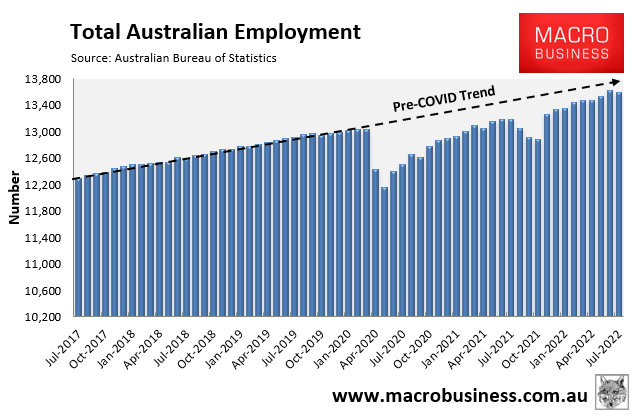
Total employment growth lags pre-COVID trend.
The resident unemployment rate still plunged to its lowest level since 1974, whereas the employment-to-population ratio hit its highest level on record:
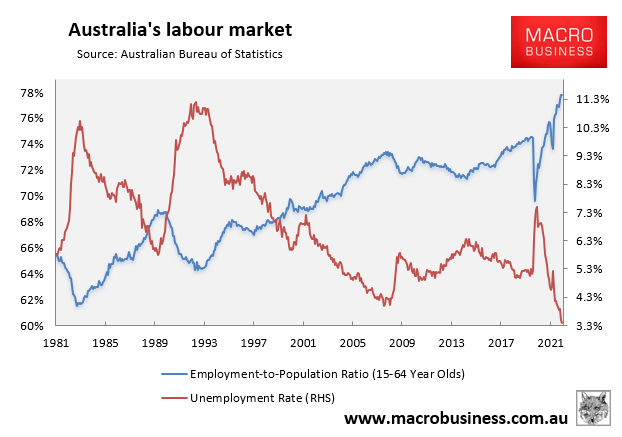
Australia’s abour market booms!
The primary reason why Australia’s labour market is now so tight is because labour supply slowed abruptly over the pandemic, thanks to the sharp decrease in migrant workers:
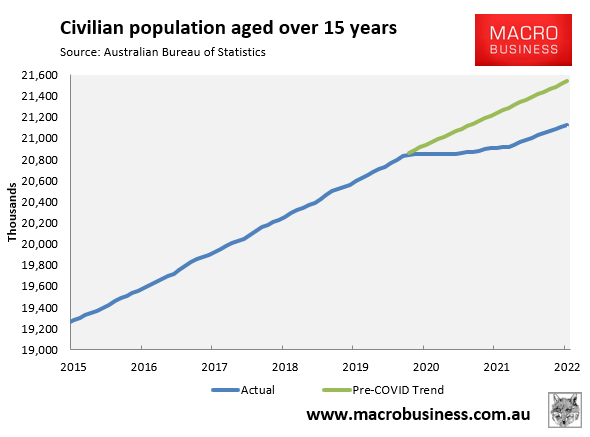
Australia ‘loses’ ~400,000 migrant workers.
Had the pre-pandemic level of immigration continued over the pandemic, there would be around 400,000 more workers in the Australian economy right now. Accordingly, Australia’s unemployment rate would be significantly higher than it currently is.
Professor Bill Mitchell – Chair in Economics and Director of the Centre of Full Employment and Equity (CofFEE) at the University of Newcastle – estimates that Australia’s unemployment rate would have been 6.1% in July had immigration continued at its pre-pandemic level. That’s 2.7% higher than the actual 3.4% reported by the Australian Bureau of Statistics.
It stands to reason, then, that accelerating immigration to its highest ever level in 2023 will grow labour supply aggressively, resulting in much higher unemployment.
Wage growth would also moderate as labour shortages ease and more workers chase the available jobs.
Aggressive RBA rate hikes will kill household consumption:
The unemployment rate is a lagging economic indicator that will not have captured the RBA’s aggressive rate hikes over the past four months.
Never has the RBA commenced a rate tightening cycle with consumer confidence in such a poor state.
Outside of the pandemic, Australian consumer confidence is tracking around its lowest level since the early 1990s recession, well below the trough experienced during the Global Financial Crisis in 2008:
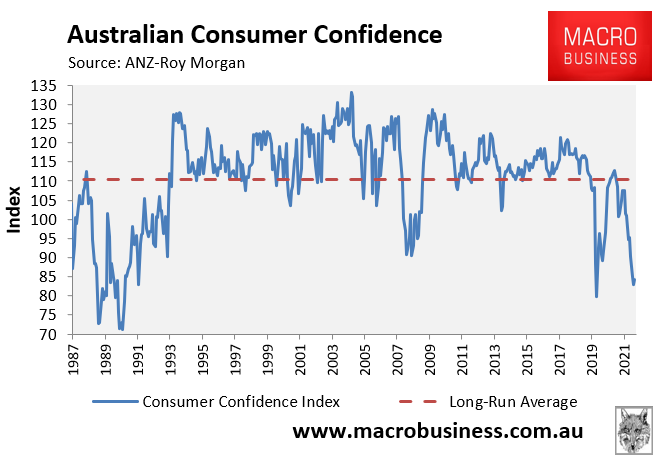
Australia’s consumer confidence tracking at recessionary levels.
Household confidence/sentiment has historically been a leading indicator for household consumption, suggesting consumption will soon fall sharply:
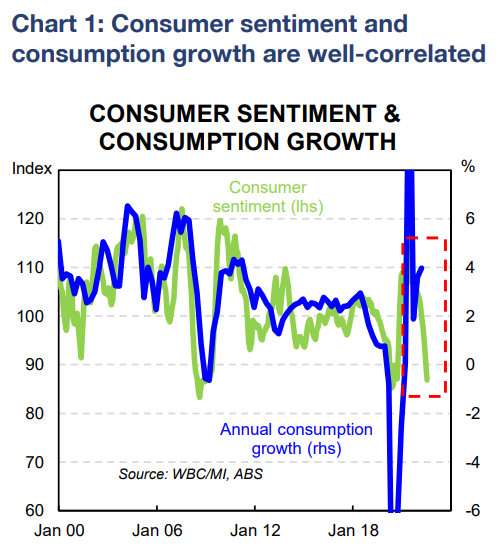
Confidence leads consumption spending.
This is important because household consumption is the engine room of the Australian economy, accounting for 55% of growth in a typical quarter. Therefore, where household consumption goes the economy usually follows, as illustrated in the next chart:
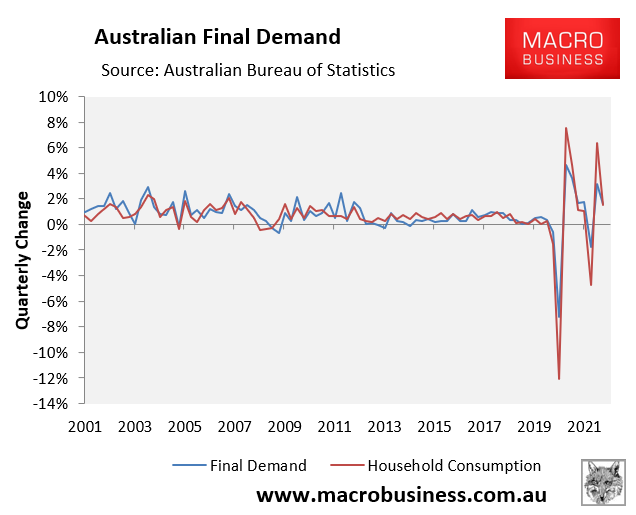
Household consumption drives growth.
As mortgage repayments soar on the back of rate hikes, there will necessarily be less funds available for spending across the Australian economy, which will drain economic growth and, in turn jobs growth.
The negative drag on household consumption will also be exacerbated by the sharp fall in house prices, which will make Australians feel poorer.
Enjoy the good times while they last:
These two factors alone are likely to drive Australia’s unemployment significantly higher in 2023.
Ramping-up immigration at the same time as the economy grinds to a halt from aggressive rate hikes is bad news for Australian workers. They will soon find it more difficult to score and job and negotiate higher wages.

